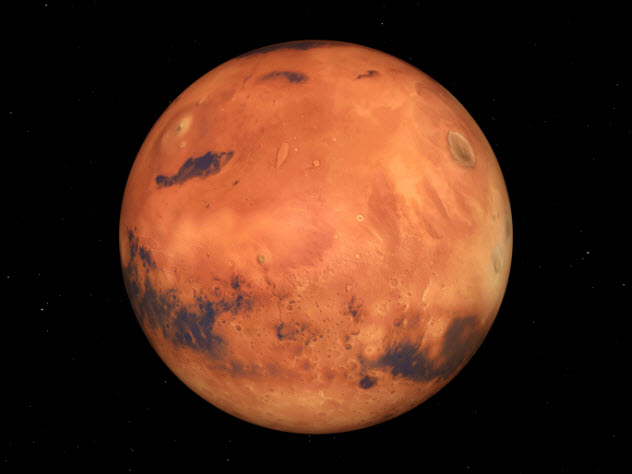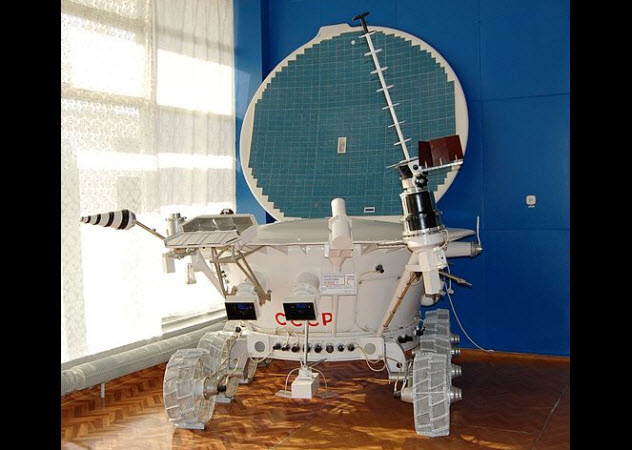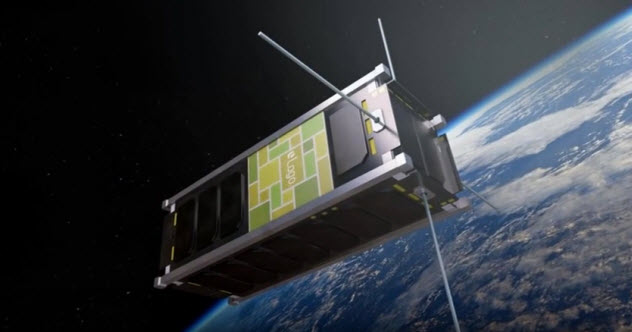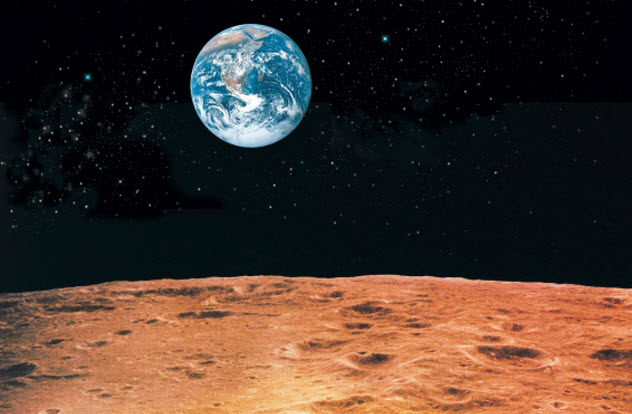 Mysteries
Mysteries  Mysteries
Mysteries  Creepy
Creepy 10 Scary Tales from the Middle Ages That’ll Keep You up at Night
 Humans
Humans 10 One-of-a-kind People the World Said Goodbye to in July 2024
 Movies and TV
Movies and TV 10 Holiday Movies Released at Odd Times of the Year
 Politics
Politics 10 Countries Where Religion and Politics Are Inseparable
 Weird Stuff
Weird Stuff 10 Freaky Times When Famous Body Parts Were Stolen
 Miscellaneous
Miscellaneous 10 Interesting Things Manufacturers Stopped Making and Why
 Gaming
Gaming 10 Funny Tutorials in Games
 History
History 10 Fascinating Little-Known Events in Mexican History
 Facts
Facts 10 Things You May Not Know about the Statue of Liberty
 Mysteries
Mysteries 10 Devastating Missing Child Cases That Remain Unsolved
 Creepy
Creepy 10 Scary Tales from the Middle Ages That’ll Keep You up at Night
 Humans
Humans 10 One-of-a-kind People the World Said Goodbye to in July 2024
Who's Behind Listverse?

Jamie Frater
Head Editor
Jamie founded Listverse due to an insatiable desire to share fascinating, obscure, and bizarre facts. He has been a guest speaker on numerous national radio and television stations and is a five time published author.
More About Us Movies and TV
Movies and TV 10 Holiday Movies Released at Odd Times of the Year
 Politics
Politics 10 Countries Where Religion and Politics Are Inseparable
 Weird Stuff
Weird Stuff 10 Freaky Times When Famous Body Parts Were Stolen
 Miscellaneous
Miscellaneous 10 Interesting Things Manufacturers Stopped Making and Why
 Gaming
Gaming 10 Funny Tutorials in Games
 History
History 10 Fascinating Little-Known Events in Mexican History
 Facts
Facts 10 Things You May Not Know about the Statue of Liberty
10 Bizarre Attempts To Make Money From Outer Space
People always want to make money. Most people are also fascinated by outer space and space travel. It takes a special type of person to combine those two desires and attempt to make money from spaceflight and space research. But some people have done just that.
10 1997 NASA Mars Court Case

When NASA landed the Sojourner and Pathfinder probes on Mars, the world heralded the expedition as a great step forward for humanity. But not everyone was thrilled. In 1997, three Yemeni men sued NASA for trespassing on what they considered their property.
According to these men, they had inherited the planet from their ancient ancestors who had lived on Mars 3,000 years before the NASA mission. They based their claim on obscure references in Himyaritic and Sabaean mythologies and a liberal interpretation of the ancient texts.
Yemeni courts viewed the men as insane. Nevertheless, the men demanded a meeting with the US ambassador and asked NASA for a complete blackout of all Mars data until the two parties reached a settlement. As publicity increased, Yemeni government officials tired of the shenanigans and told the men that they would be imprisoned if the case wasn’t dropped. The men complied quickly.
However, even though the case was dropped, the men continued to try to make money from Mars. They still claimed ownership but expanded their scheme. In 1998, they announced that they were selling plots on Mars for $2 per square meter ($11 per ft2) and pledged to use the money to restore several ancient cities.
Few people took the business seriously because an international treaty states that any land not on Earth does not belong to any one person. Still, a bit of money was made from people too gullible to notice a blatant scam.
9 Tnuva Space Commercial
If advertisers have their way, their ads will soon be all over outer space. Although space advertising is the wave of the future, it began in 1997 with the Israeli milk company Tnuva. The company planned to film its commercial on the Russian space station Mir featuring mission commander Vasily Tsibliyev. Tnuva wanted to spotlight the high quality and reliability of their milk.
In the ad, Commander Tsibliyev loses contact with Mir mission command. On regaining contact, ground control asks him what he wants more than anything. Tsibliyev answers that he wants nothing more than a glass of real milk—real Israeli milk, to be precise.
The ad ends with a shipment of milk being launched to Mir and a shot of Tsibliyev drinking the milk in space. The 90-second commercial required nine months of planning and cost $450,000 dollars. But it was worth it for Tnuva to say that they filmed the first commercial in space.
Interestingly, the commercial was not just a historic advertising event. It also helped Russian-Israeli relations. The two countries cooperated to film the commercial, easing tensions between them. Although it wasn’t a major milestone in the space program, the Tnuva commercial opened up a new front of possible advertising schemes for companies with enough dedication and money.
8 Selling Lunokhod 2

In 1973, the Soviet Union sent the unmanned Luna 21 spacecraft to the Moon. When Luna 21 landed, it released the diminutive Lunakhod 2 rover. Initially, the Lunakhod 2 was successful, making short drives around the lunar surface.
By June of that year, the Soviet Union announced that the project was over. Nobody knows exactly why it ended, but speculation is that the rover either lost contact with mission control or was unable to drive any farther.
For years, the Lunakhod 2 sat on the lunar surface. Nobody gave much thought to it until December 1993 when the title to Lunakhod 2 and the Luna spacecraft appeared at a Sotheby auction in New York. The Lavochkin Company that designed the rover and spacecraft were auctioning them off for $68,500.
Obviously, nobody had retrieved either the rover or the lander from the Moon, but the discarded Soviet technology was still sold. Video game developer Richard Garriott won the lot and gained ownership of Lunakhod 2 and Luna 21.
As weird as it is that Lavochkin auctioned off a discarded (and currently irretrievable) piece of tech, Garriott’s ownership opens up a lot of questions about space law. Currently, he is the only private owner of an object on a celestial body.
International law dictates that no government can lay claim to extraterrestrial land. But Garriott is a private owner, so the treaties do not apply to him. In interviews, Garriott has made tongue-in-cheek statements that he has claimed the Moon for Lord British, one of his video game characters.
7 Gregory W. Nemitz’s Space Parking Ticket

In 1996, NASA launched a mission to 433 Eros, a small asteroid relatively close to Earth. Called the NEAR Shoemaker, this robotic probe was designed to circle Eros and eventually land on the surface. The orbital mission was a resounding success, sending back tons of data for NASA scientists to study. In February 2001, NEAR Shoemaker stopped orbiting and finally landed on the surface of the asteroid.
One man stood in the way of NASA’s celebrations. Space enthusiast Gregory W. Nemitz claimed to own 433 Eros. Eleven months before the touchdown, Nemitz had recorded and published his claim with a nonprofit organization.
Within a few days of NEAR Shoemaker landing, NASA received an invoice from Nemitz. He claimed that NASA owed him $20 for parking, which is 20 cents per year, payable in one-century installments. Of course, NASA refused to pay the fee, stating that Nemitz had misunderstood various space treaties.
Whether or not the project started as a joke, Nemitz took it seriously and filed a lawsuit against NASA for defaulting on their payment. The case went all the way to the US Court of Appeals in San Francisco. The judge refused to act on the lawsuit and threw out the case. Without the possibility of future legal action, Nemitz is angry about the incident. Maybe that’s because scientists have discovered that 433 Eros holds billions of dollars of platinum.
6 Uwingu Naming Scam

Who hasn’t wanted to have a planet named after them? As the planets in our solar system are already named, it seemed like an impossible dream until we discovered planets orbiting other stars. These exoplanets are all the rage in astronomical research, but they generally have unexciting names like Kepler 452b. The startup company Uwingu promised to change all that by offering an exoplanet-naming contest.
Initially, Uwingu allowed users to submit a name for an exoplanet at $0.99 per submission, although the cost has since been raised to $9.99. To vote on the names they liked best, users paid another $0.99 per vote.
During the company’s initial fundraising efforts, astronomers raised concerns about Uwingu’s methods. First, the company did not disclose how they would use the money. Second, the naming of celestial bodies is strictly regulated by the International Astronomical Union (IAU). According to the IAU, they will continue to assign the official names to exoplanets, regardless of what Uwingu claims.
When the IAU further warned that Uwingu was promoting a scam, it seemed like the company would fail. However, the Uwingu owners came up with a new scheme. Now you can now buy the right to own a crater, starting at $5 for small craters.
Uwingu claims that this will offer a better map of the Martian surface. Once again, the IAU refuses to acknowledge any of these crater names, but that hasn’t stopped people from spending money on Uwingu’s scheme.
5 KU Leuven University Billboard

Not content with simply making commercials in space, a trio of Belgian space researchers at KU Leuven undertook a project to make the first space billboard. These billboards will be on the side of a satellite called “CubeSat” that’s designed by the student researchers. The satellite is the size of a small box and capable of carrying a variety of tiny instruments. This means that each billboard will be about 8×8 centimeters (3×3 in) wide.
Obviously, the billboards will be impossible to see from Earth. So nobody is quite sure what the purpose of the billboards will be, but at least seven companies (including Microsoft) have already invested in the project. Presumably, the ability for a company to say that they have one of the first space billboards is worth the $3,000 investment to buy an ad. The KU Leuven team plans on outfitting the satellite with small cameras to give an external view of the ads.
Besides its role as a space billboard, the CubeSat will also research global warming. Although this whole endeavor seems a bit strange, the team has partnered with the European Space Agency to send the satellite into orbit in 2016. Once the CubeSat achieves orbit, it will open a new front for advertising in space and help to determine the feasibility of tiny satellites that are faster and cheaper than traditional satellites.
4 Pocari Sweat Lunar Dream Capsule
CubeSat is not the only space mission planning to break new ground in 2016. The Japanese soft drink company Pocari Sweat is also planning to launch their own advertising mission to the Moon. Engineers designed a special can of powdered Pocari Sweat in the hopes that astronauts will find the can one day and mix the powder with water they have on hand. Also, the inside of the can contains messages from Earth children.
This time capsule in space is more complex than it sounds. The can has 70 components to keep it safe in transit. However, getting it to the Moon is not a huge problem. Pocari Sweat is partnering with Astrobotic Technology to hitch a ride on their lunar lander. Astrobotic is planning to launch on a SpaceX rocket in early 2016.
If all goes according to plan, Pocari Sweat will be the first private company to land an object on the Moon with their soda can time capsule. One day, Pocari Sweat hopes that Moon travel will be commonplace. If so, they will already have an advertising scheme on the lunar surface.
3 Outer Space Reality Shows
For better or worse, reality television shows have changed the way people watch TV. Various groups and companies are planning reality shows to capitalize on space exploration and humankind’s desire to go into space. The most well-known are Space Race and the show proposed by Mars One.
Mars One is the fundamentally unfeasible project to put human settlers on Mars. To pay for the enormous cost, Mars One has a variety of sponsors, but they also planned on making their own TV show. Endemol planned to produce the show, which would follow the astronaut candidates through basic training and then to the surface of Mars. Unfortunately for Mars One, they could not reach an agreement with Endemol, and the show fell apart. Now it seems like Mars One will fall apart, too.
A little more grounded is NBC’s TV show Space Race. Produced by television veteran Mark Burnett, the show was slated to follow contestants as they competed for a ticket aboard Virgin Galactic’s SpaceShipTwo commercial space shuttle. Burnett stated that it has always been his dream to have a TV show where people competed to go into space. However, NBC is reassessing its plans for the show after SpaceShipTwo exploded in 2014, killing one pilot and injuring another.
The whole endeavor is reminiscent of Burnett’s proposed TV series Destination Mir in the late 1990s. In that show, contestants would have competed to win a flight to the Mir space station. Obviously, that did not pan out because Mir burned up on reentry into Earth’s atmosphere in 2001.
2 Specsavers Teddy Bear
When Tnuva did their famous milk commercial, it opened a realm of possibilities for companies with enough money to advertise in space. Chief among these is Specsavers, an international optometry company. In 2011, Specsavers began advertising with space themes by using an amusing commercial about an astronaut losing his glasses. Once that commercial was a hit, they decided to increase the scope of their advertising.
Influenced by the Red Bull space jump and the movie Gravity, Specsavers planned to launch a pair of their glasses into space as part of a new advertising scheme. To do this, the company attached a set of scientific balloons to a teddy bear wearing Specsavers glasses.
The commercial showed the teddy bear floating away from a fairground, ending with a breathtaking shot of the teddy bear at the edge of Earth’s atmosphere. Technically, that’s not outer space, but it’s close enough.
The campaign was incredibly successful and started a social media trend with the hashtag #TeddyInSpace. At high altitude, the balloons eventually exploded. As the teddy bear had not yet left Earth’s atmosphere, it fell to Earth, where the advertising team recovered it. The image of a floating teddy bear was one of the most iconic images of 2015.
1 Dennis Hope

One of the most successful space real estate scams is Dennis Hope’s Lunar Embassy Commission. After founding his company in 1995, Hope began selling 1-acre plots on the Moon for about $20 each. He claimed that each plot was rich in a type of helium that was worth about $125,000 per ounce at that time. As soon as Moon travel becomes commonplace, one plot could make you a rich person.
Obviously, this goes against international treaties which state that the Moon can’t be claimed. In Hope’s defense, he did file an official request with the United Nations to grant him permission to begin selling lunar real estate. When the UN didn’t answer, he took that as a “yes” and began selling plots of land. So far, Hope claims to have sold at least 2.5 million plots, including those to former US Presidents Jimmy Carter, Ronald Reagan, and George H.W. Bush.
This scam has been running for nearly 30 years. Hope states that the Moon is open for everybody. When somebody buys land, he decides where the plot is located by closing his eyes and randomly pointing at a lunar map. Wherever his finger lands is yours.
Not only has Hope claimed portions of the Moon, he also trades his own Moon currency called the “Delta,” which he has tried to get recognized by the International Monetary Fund. A few years ago, he expanded his business to sell land on Mars, Venus, Mercury, and the Jupiter moon Io.
In 2013, Hope learned that the Chinese government was proposing to build a Moon base that would encroach on his land. Although he lodged a complaint with the Chinese, he has yet to hear back from them.
Zachery Brasier is a physics student who likes to write on the side.








